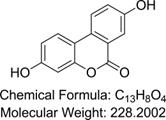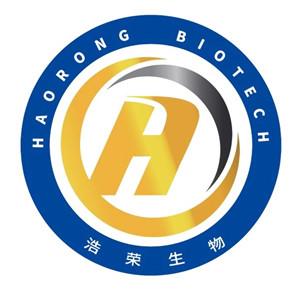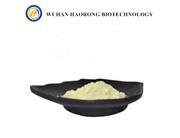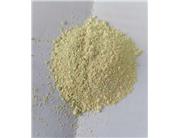
Product Name | 3,8-dihydroxy-6H-benzo[c]chromen-6-one(Urolithin A) | Structure |
CAS: | 1143-70-0 |  |
Appearance | Light yellow to yellow powder |
Puirty | Purity of HPLC ≥99.0% |
Packing | 1KG/bag 25KG/drum |
Delivery ways | TNT,UPS,DHL,EMS and Fedex |
Payment way | Bank Transfer,WU,MG,Bitcoin |
Storage Conditions | Sealed storage |
Urolithin A, also known as 3,8-dihydroxy-6H-dibenzo [B, D] pyran-6-one, is a compound found in pomegranate and other plants
A natural metabolite found in fruits and nuts, soluble in dimethyl sulfoxide and N, N-dimethylformamide
Wait for organic solvents, slightly soluble in water.

In 2016, an article published in the journal Nature Medicine first linked urolithin A to aging. The article indicates that UA can not only prolong the lifespan of nematodes but also enhance muscle function in mice.


(1) Anti aging, enhancing muscle function
Dongryeol Ryu et al. [1] found in 2016 that compared to populations treated with placebo, feeding nematodes with standard concentrations of 50 µ M UA, UB, UC, or UD from egg to death extended their lifespan by 45.4%, 36.6%, 36.0%, and 19.0%, respectively. In contrast, treatment with the same concentration of ellagic acid (EA) had no effect on lifespan.

When the concentration of urolithin A increases from 10 µ M to 50 µ M, there is a significant dose-response effect on lifespan. At 50 µ M, UA significantly delayed the mortality rate of elderly patients (P ≤ 0.001).

We evaluated the effect of urolithin A treatment on preventing age-related muscle decline in 16 month old male C57BL/6J mice fed a high-fat diet (HFD). Starting from the age of 16 months, we added 50mg/kg/d of UA to the diet and continued for another 8 months. We found that long-term use of UA does not affect weight gain or the evolution of fat and lean body mass (Supplementary Figure 7c). At 22 and 24 months of age, compared to the control group mice fed hfd, treatment with urolithin A resulted in a significant increase in muscle function. Although there was no change in muscle mass, grip strength increased by 9% and spontaneous exercise levels measured using running wheels increased by 57% (n=25 mice).

In addition, this study also confirmed that urolithin A can induce mitochondrial autophagy
(2) Assist in enhancing the anti-tumor ability of immunotherapy
In 2022, the Florian R. Greten research team from the Georg Speyer Haus Institute for Tumor Biology and Experimental Therapy in Germany [2] found that urolithin A can induce mitochondrial autophagy in T cells, promote PGAM5 release, activate the Wnt signaling pathway, promote T memory stem cell formation, and thus promote anti-tumor immunity.
After injecting carcinogenic substances into mice for a period of time, researchers added urolithin A (2.28g/kg) to the diet of some mice. Compared with the normal diet control group, the mice supplemented with urolithin A had a lower tumor incidence rate, and the existing tumors were also smaller.
Analysis shows that this is because after supplementing with urolithin A, more cytotoxic T cells enter the tumor microenvironment, controlling tumor growth. Moreover, supplementing urolithin A in combination with existing immunotherapy can also target tumors that were previously unresponsive to immune checkpoint inhibitors.
Further in vitro experiments have shown that supplementing with urolithin A alters the fate of T cells. Some cytotoxic T cells are reprogrammed to become stem cell memory T cells (Tscm), which are immune stem cells with the ability to divide, thus continuously replenishing the immune system with vibrant T cells.
(3) Reverse hematopoietic stem cell and immune system aging
In 2023, researchers from the University of Lausanne in Switzerland [3] found that in this study, they fed mice (18 months old) with a diet rich in urolithin A for 4 months, monitored changes in blood cells once a month, characterized hematopoietic stem cell and progenitor cell banks, and analyzed the immune system. Analysis of the population of bone marrow hematopoietic stem cells and progenitor cells revealed an increase in the levels of hematopoietic stem cells and lymphoid progenitor cells, a decrease in the levels of erythroid progenitor cells, and no changes were observed in other cells. In fact, during the aging process, lymphatic progenitor cells show a decreasing trend, while the content of erythroid progenitor cells increases. This indicates that a diet rich in urolithin A can restore the hematopoietic system and age-related features.


![3,8-dihydroxy-6H-benzo[c]chromen-6-one/Urolithin A](/ProductImageEN/2024-07/Large/de07e653-f55b-4e2f-be14-040a6eba4da8.png)
![3,8-dihydroxy-6H-benzo[c]chromen-6-one/Urolithin A](/ProductImageEN/2024-07/Large/0ae611b2-165c-4c2a-90be-92c55fc0cf86.png)
![3,8-dihydroxy-6H-benzo[c]chromen-6-one/Urolithin A](/ProductImageEN/2024-07/Large/c1c018e9-94f5-4d18-91ea-bd0bb9206820.png)
![3,8-dihydroxy-6H-benzo[c]chromen-6-one/Urolithin A](/ProductImageEN/2024-07/Large/7ad6b057-d372-4364-bc84-de4a6af7ee24.png)
![3,8-dihydroxy-6H-benzo[c]chromen-6-one/Urolithin A](/ProductImageEN/2024-07/Large/95eb1a17-bd09-4ae1-a8f7-b22dcaa9c53f.jpg)

 China
China










